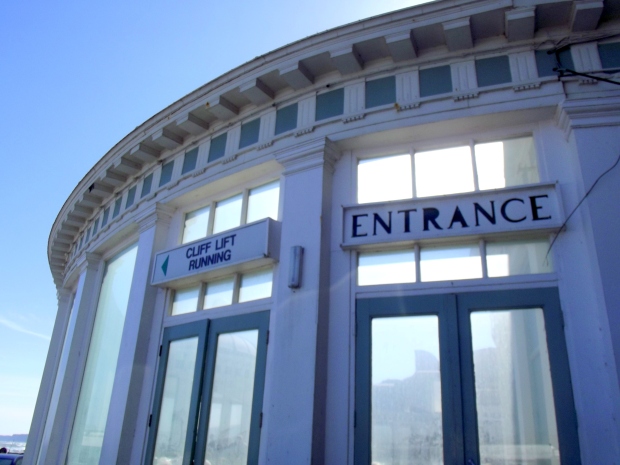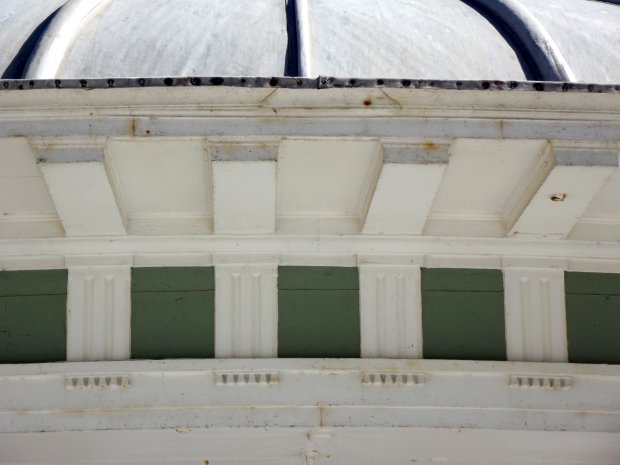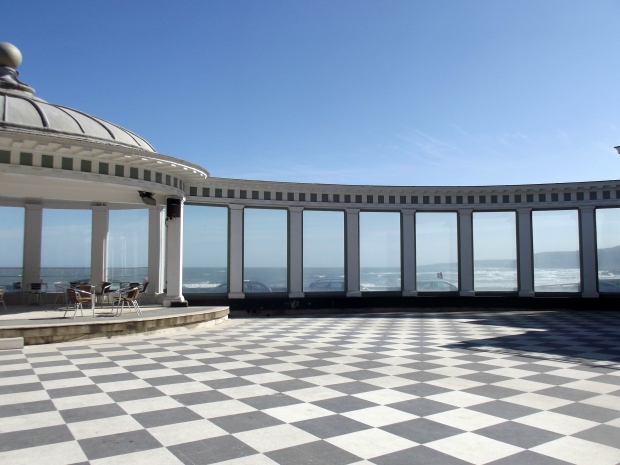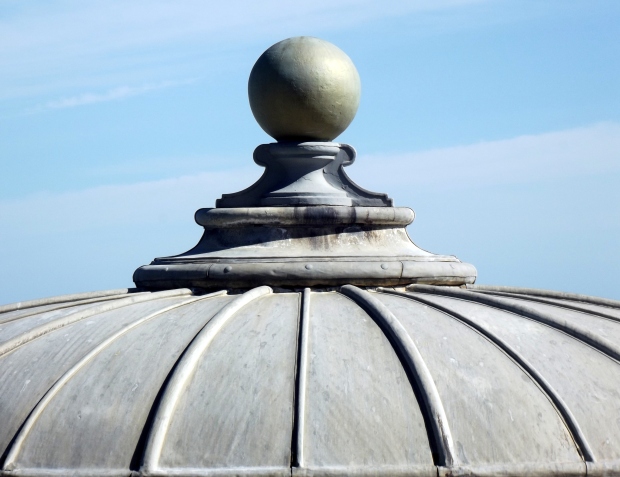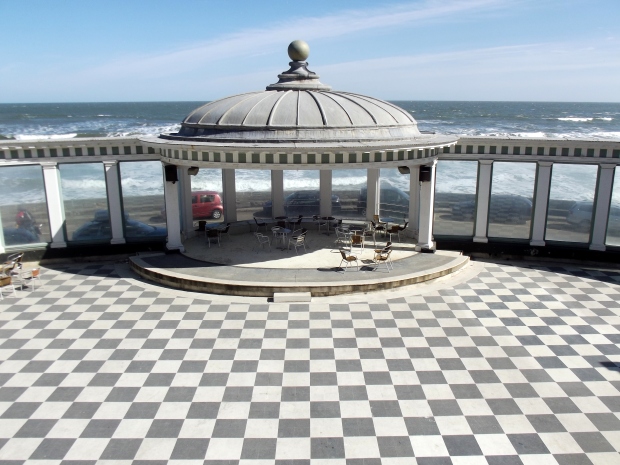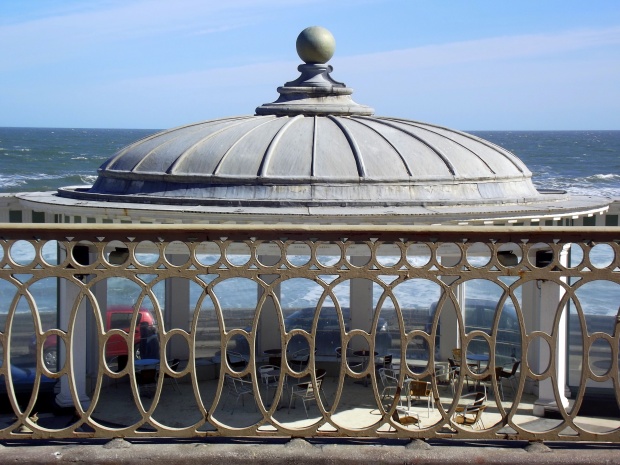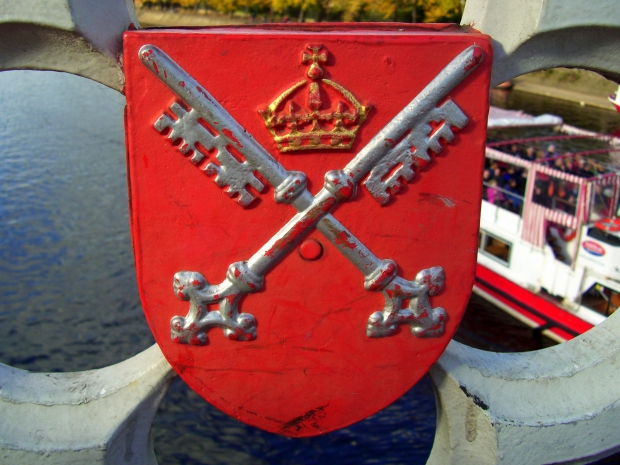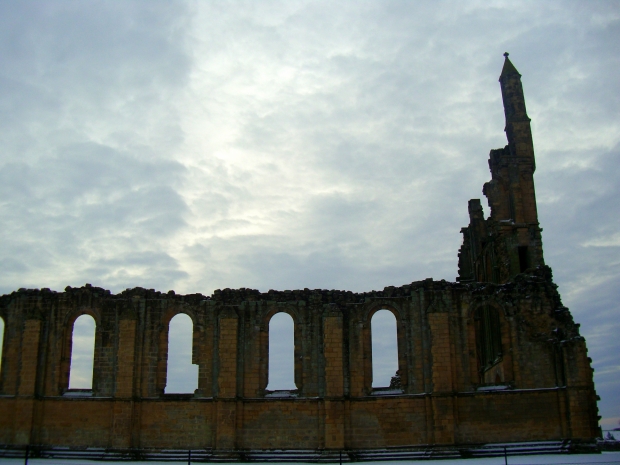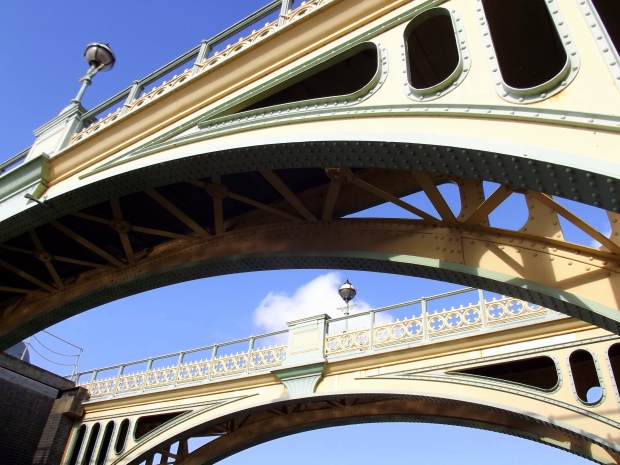 This weekend is Open House weekend and consequently I have been running about all over the city taking photographs of some of the capital’s most interesting buildings. Despite the fact it was Sunday, I was up sharpish this morning for a behind the scenes tour of Richmond Lock. I live nearby in Kew so managed to be the first in the queue.
This weekend is Open House weekend and consequently I have been running about all over the city taking photographs of some of the capital’s most interesting buildings. Despite the fact it was Sunday, I was up sharpish this morning for a behind the scenes tour of Richmond Lock. I live nearby in Kew so managed to be the first in the queue.
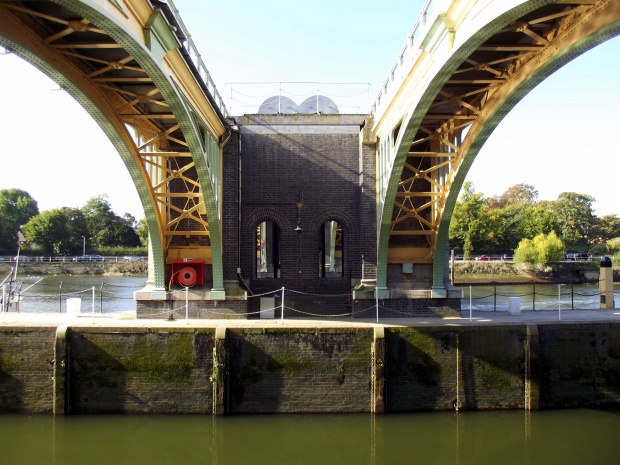
The lock is being repainted next year so I will probably photograph that process and ensure I get some more shots of her before she gets a makeover.
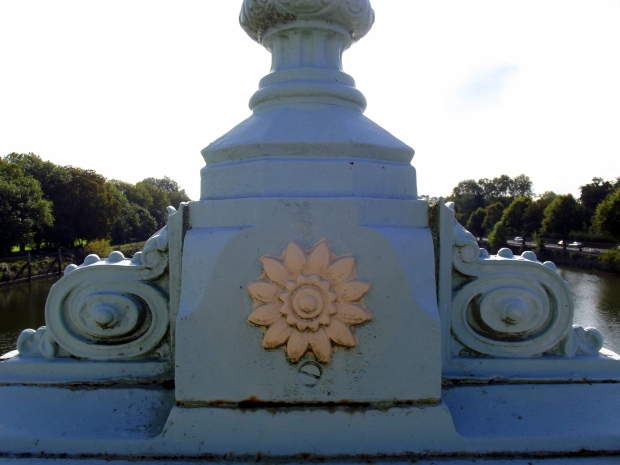
The Open House guide described her as a piece of ‘functional design’ but as she was built during Victoria’s reign she is also rather ornate.
 This is a view looking down into the weir from the walkway. A blend of shapes, textures and sounds.
This is a view looking down into the weir from the walkway. A blend of shapes, textures and sounds.
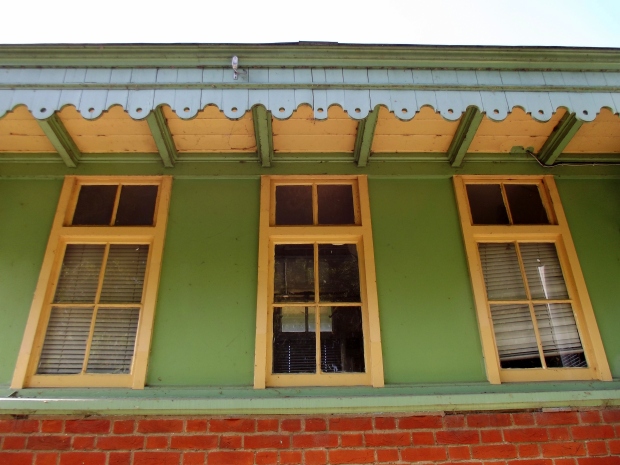 This is the side of the hut that once contained the toll booth. Once over pedestrians had to pay to cross over the river. It is now redundant as it is now free like all the other crossings in London.
This is the side of the hut that once contained the toll booth. Once over pedestrians had to pay to cross over the river. It is now redundant as it is now free like all the other crossings in London.
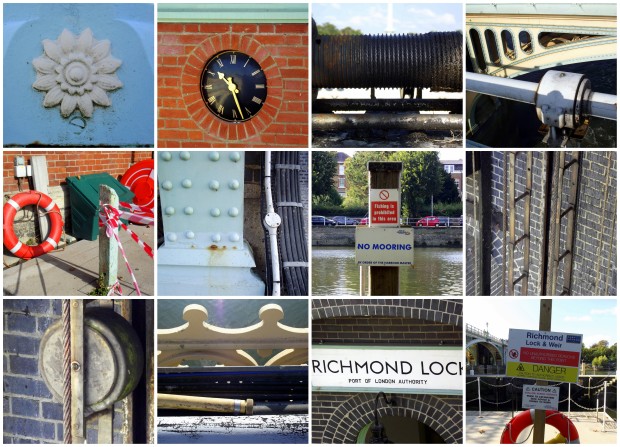 Some of the smaller details are captured in this collage. I particularly like the dark brick work around the Richmond Lock sign.
Some of the smaller details are captured in this collage. I particularly like the dark brick work around the Richmond Lock sign.
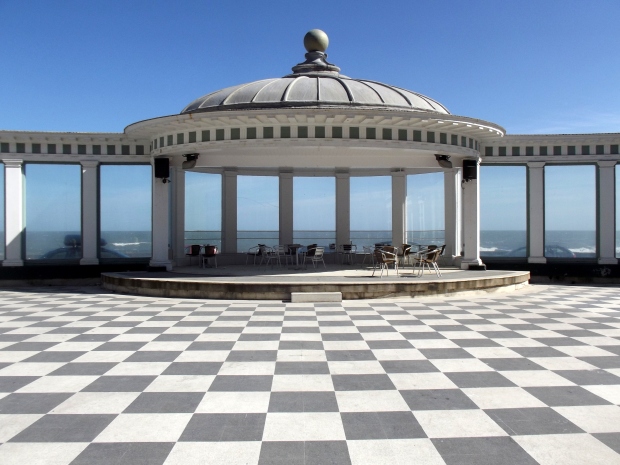 Today, as the weather was bright, I tripped out to Scarborough for a few hours. Whilst I was there I took the time to photograph this classic building that stands proud of the town spa. The glass wings provide perfect panoramas across the dramatic North East coastline, it’s an inspiring and atmospheric venue.
Today, as the weather was bright, I tripped out to Scarborough for a few hours. Whilst I was there I took the time to photograph this classic building that stands proud of the town spa. The glass wings provide perfect panoramas across the dramatic North East coastline, it’s an inspiring and atmospheric venue.
Anyone subscribed to my mailing list will receive a piece specially written about the bandstand tomorrow. Until then, I hope you enjoy the photographs below.
]]>
Thomas Page designed this bridge. He was a 19th century civil engineer with a penchant for Gothic architecture and in addition to designing the Lendal and Skeldergate bridges of York he also worked on Westminster bridge and the original Chelsea bridge in London. Lendal Bridge replaced a ferry service and a less stable bridge, one that killed 5 men when it collapsed, in 1863 and is book-ended by two beautiful stone towers from the 14th century. The bridge itself may not be that old but the medieval towers, originally used to control river traffic, and documented evidence of the prior ferry service suggests that this stretch of the river has been an important crossing point for hundreds of years. When it first opened there was a toll for crossing the bridge in order to pay for its construction but York City Council have finally missed a trick as the last toll was charged back in 1894 (take a look at the parking rates for York city centre and you’ll swiftly understand what I mean by this).
In the 21st century Lendal Bridge acts as a courseway between the railway station and the town. It connects tourists to coffee shops (mostly the supremely over-priced Betty’s), students to campuses and shabby-chic bars and locals to the train station so that they can escape the tourists and students by eloping to the heady new horizons of Leeds, Manchester and Newcastle. To the community I suppose more than anything this bridge means trade but to me this bridge symbolises freedom, quietude and good old-fashioned Yorkshire pride.
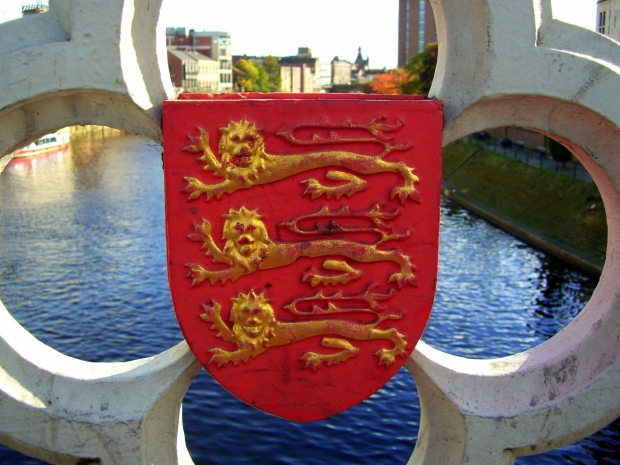
The lions of England were added to the parapet to demonstrate the patriotism of the Yorkshire people.
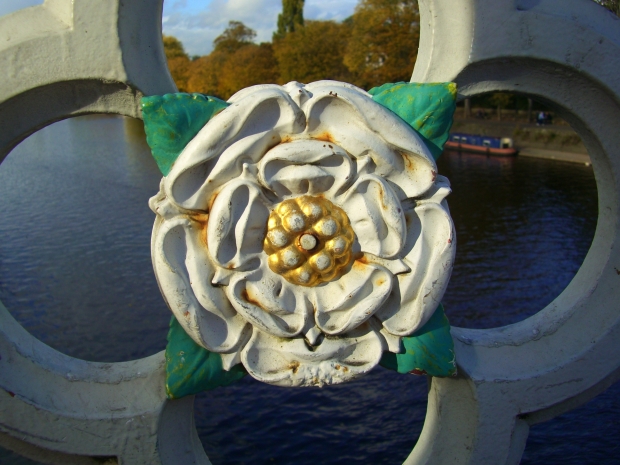
The White Rose of York dates back, as far as its emblematic use goes, to the original Duke of York: Edmund of Langley. Although its origins are rooted in religious significance most people from the North Yorkshire riding now consider this a symbol of their love for York and the surrounding area. Merchandise is available from all good tourist information shops.
Growing up in the small market town of Thirsk, some 20 miles outside York city centre, Saturday trips out to York with my friends were an exhiliarating taste of independence. As soon as we passed over Lendal I felt far away from the narrow-minded gossips and doomed wannabe-teen-mums of my home town, and, as you may be able to tell from my tone, this made me very happy. Lendal transported me to new and exciting places such as Cappacino’s, a cafe that did awesome milkshakes, and the Warner Brothers cinema. Well, actually we had to get another bus out of town to get to the 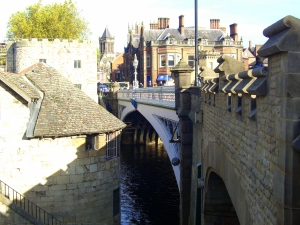 Warner Brothers cinema at Clifton Moor but we couldn’t have got on the bus if we hadn’t passed over Lendal Bridge. Lendal Bridge is the reason that all of my pocket money was spent on rough records cut by practically unknown Mancunian indie bands of the mid-1990s as it (cripplingly) connected me to HMV. It’s difficult to tell, in retrospect, whether that is a good or a bad thing.
Warner Brothers cinema at Clifton Moor but we couldn’t have got on the bus if we hadn’t passed over Lendal Bridge. Lendal Bridge is the reason that all of my pocket money was spent on rough records cut by practically unknown Mancunian indie bands of the mid-1990s as it (cripplingly) connected me to HMV. It’s difficult to tell, in retrospect, whether that is a good or a bad thing.
Later in life I sat by this bridge to write my journal. When I was weary from washing dishes and mopping floors just so I could study creative writing in the hopes of one day becoming “a real writer” I would find shelter near this bridge and watch the river flow by as I wrote. It was quiet; it was solace; it was a parenthesis from ignorant customers, pushy bosses and cryptic lecturers. The many tourist boats would sail by and I would watch them watching me and then scribble in my notebook to make them think I was writing about them. Always mess with their minds.
All that time, however, that I was in refuge at the base of that bridge I didn’t know one of the most fascinating facts about it. I only discovered this little nugget of kitsch when I started my research for this article, but it was one of the very first things to come up: the bridge was used in some key scenes of the Brookside spin-off Damon and Debbie. Apparently way back in 1987 Damon and Debbie, a soap-bubble 3-parter, rocked the soap opera world by killing off one of Brookside’s most popular and long-running characters: Damon Grant. History, beauty and a so-bad-it’s-good pop culture reference. What more could a girl want in a bridge?
]]> The Millennium Bridge in London is a striking representation of the barest bones of architecture: a steel skeletal suspension forging a connection not just between north and south London but between the progressive art of the Tate Modern and the beloved antiquity of St Paul’s Cathedral. It is beautifully bookended by these two notably contrasting structures and this rather rousing example of urban juxtaposition promotes the idea of the bridge being a link in the chain of history rather than a lowly conduit between the banks of the river.
The Millennium Bridge in London is a striking representation of the barest bones of architecture: a steel skeletal suspension forging a connection not just between north and south London but between the progressive art of the Tate Modern and the beloved antiquity of St Paul’s Cathedral. It is beautifully bookended by these two notably contrasting structures and this rather rousing example of urban juxtaposition promotes the idea of the bridge being a link in the chain of history rather than a lowly conduit between the banks of the river.
With its sulky, grey exterior and its plainer-than-Jane concrete supports you probably won’t be surprised, at least on an aesthetic level, to learn that the bridge is actually the product of an architectural competition held by the Financial Times. At the time of its inception, back in 1996, it would be the first footbridge to be built across the Thames in over a century. Rather drab, some might say, for a century’s wait and yet somehow this wallflower of a bridge does possess a certain  charm. Perhaps it’s the unavoidable sense of its unassuming nature. It stretches itself out with such humility between two cultural giants of architecture; barely a blip on the radar of the skyline along the river. Even the suspension cables, in contrast to international suspension favourites Brooklyn and Golden Gate, are unobtrusive. Stowing away below deck to ensure a clear view across the cityscape. The Millennium Bridge is undoubtedly a servant of the city rather than a frame for it.
charm. Perhaps it’s the unavoidable sense of its unassuming nature. It stretches itself out with such humility between two cultural giants of architecture; barely a blip on the radar of the skyline along the river. Even the suspension cables, in contrast to international suspension favourites Brooklyn and Golden Gate, are unobtrusive. Stowing away below deck to ensure a clear view across the cityscape. The Millennium Bridge is undoubtedly a servant of the city rather than a frame for it.
I remember, four years ago, standing somewhat bewildered on this dias of the metropolis, looking out over the possibility before me: the beacon of the BT tower with its blue glow tinging the twilight, the trains rattling across the railway bridge into Waterloo and the hieroglyphs of Cleopatra’s Needle partially hidden by the serpentine curve of the river. I had just received a phone call confirming my first writing job in London and for the first time in as long as I could remember I had that most precious feeling of being in the right place at the right time.
Things didn’t necessarily turn out the way I thought they would for me in London, lending further weight to the tabloid argument that the bridge is in some way cursed, but to this day I have yet to cross the bridge without being reminded of the unparrallelled awe of that moment. The thrill and the fright over making my own way in the city re-injects itself into my bloodstream. My heart fills with marvel as I stand humbled by the intricate pillars and domes of St Paul’s Cathedral  and I simultaneously extend a strange, sympathetic love to the block-head chimney of the old Bankside Power Station. It’s rather beautiful in its hulking ugliness and I’ve always been a sucker for the black sheep, the ugly duckling, the mongrel underdog that’s been in too many fights. Many might argue that the archtectural awkwardness of the power station, like the tall girl at school ever desperate to hunch, is preferable to the unremarkable anatomy of The Millennium Bridge but in my, admittedly wild, imaginings both while away their years casting longing looks at the classical beauty of St Paul’s and exalting in relief that neither of them are The Millennium Dome: a pre-school art project gone awry if ever there was one. I’m still convinced that it’s made of masacred egg boxes. Where else does all that recycling go?
and I simultaneously extend a strange, sympathetic love to the block-head chimney of the old Bankside Power Station. It’s rather beautiful in its hulking ugliness and I’ve always been a sucker for the black sheep, the ugly duckling, the mongrel underdog that’s been in too many fights. Many might argue that the archtectural awkwardness of the power station, like the tall girl at school ever desperate to hunch, is preferable to the unremarkable anatomy of The Millennium Bridge but in my, admittedly wild, imaginings both while away their years casting longing looks at the classical beauty of St Paul’s and exalting in relief that neither of them are The Millennium Dome: a pre-school art project gone awry if ever there was one. I’m still convinced that it’s made of masacred egg boxes. Where else does all that recycling go?
]]>
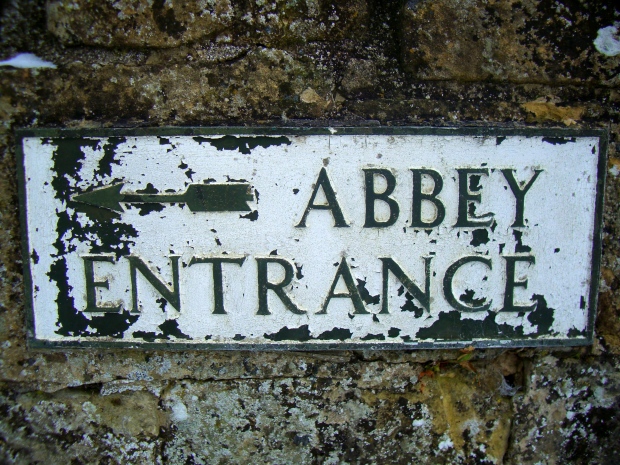
]]>
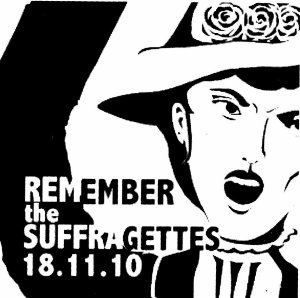 Yesterday was my birthday and although I was spoilt rotten by those around me I spent a great portion of the evening doing the exact opposite of celebrating: commemorating. My birthday coincides with one of the largest scandals in the history of women’s rights: Black Friday and yesterday marked 100 years since Black Friday originally occured. I attended a vigil at Westminster to remember the women who had fought, all that time ago, for the rights that I enjoy today. The evening started with a reading. Accounts were read out from women who survived their ordeal on Black Friday and those accounts, I cannot deny, moved me to tears.
Yesterday was my birthday and although I was spoilt rotten by those around me I spent a great portion of the evening doing the exact opposite of celebrating: commemorating. My birthday coincides with one of the largest scandals in the history of women’s rights: Black Friday and yesterday marked 100 years since Black Friday originally occured. I attended a vigil at Westminster to remember the women who had fought, all that time ago, for the rights that I enjoy today. The evening started with a reading. Accounts were read out from women who survived their ordeal on Black Friday and those accounts, I cannot deny, moved me to tears.

Following Caroline’s speech we marched around Parliament holding candles and banners in vigil. We shouted long and hard at the parliamentry gates that we wanted “Deeds Not Words.” Helen Pankhurst (great granddaughter to Emmeline, granddaughter to Sylvia) spoke about the plight of her ancestors and laid a wreath on the memorial to Sylvia that stands just outside the Houses of Parliament. At least, she tried to. The police had locked the gates and consequently we had no choice but to climb over the gate to lay the wreath. Funnily enough a bit of metal wasn’t going to get in the way of us commemorating somebody who had changed the lives of generations.
Standing there next to Sylvia’s memorial I thought about all the women who’d endured beatings, abuse and even death – for me. Most of us know the Pankhursts – they are the big names in Suffrage but there are a few other names (and many more that I don’t know and probably never will) that are worth mentioning. Those names are Nancy Astor, Mary Clarke, Catherine Booth, Josephine Butler, Flora Drummond, Elizabeth Fry and Emily Davidson. After my experiences at Westminster last night I’m always going to remember their sacrifice and I hope after reading this, rather small, tribute that you will remember it always too.
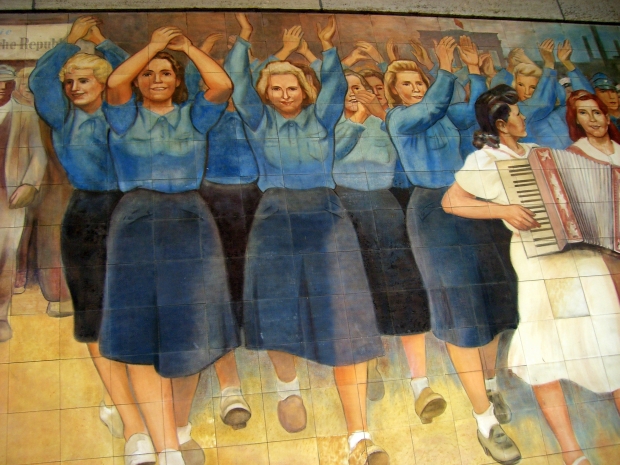
As a city Berlin, particularly former East Berlin, is a slate wiped clean. It’s difficult to believe that beneath its smooth, reconstructed surface there is a rather raw and recent history of subjection, division and civil conflict. From the caved-in and concreted-over Fuhrerbunker, in which Adolf and Eva Hitler famously committed double suicide just 40 hours after they had exchanged wedding vows, to the left-over, forboding, communist buildings that have been transformed into municipal hubs to serve and support the public; there is little, but still some, remaining evidence of the prior gravity that once weighed so heavily on Berlin’s disjointed shoulders. Not least the 2711 concrete slabs arranged by architect Peter Eisenman as a memorial to the Holocaust.
When I first looked upon the memorial I was very unsure about it. It seemed a little bit too minimal. Once I began walking around the blocks however I came to understand what Eisenman had created a little bit better. It is, in effect, a blank canvas that allows you to project your own thoughts and feelings onto it rather than dictating what you should be thinking and feeling. The labyrinthine nature of the structure allows you to lose yourself in reflection about what this city and indeed Europe has endured in the last 60 years. Unlike the regimes that have dominated Germany and divided Berlin this homage is not oppressive, even in spite of its concrete base, but a modest and fitting reminder of what has gone before.
The image above is part of a mural located a five minute walk away from Checkpoint Charlie in the Mitte district. There are various segments to the mural all of which display the communist projection of how life was living in East Berlin during the Cold War. Apparently there was a lot of clapping for communism – not wholly convincing given the number of East German citizens that tried to flee to West Germany, over 100 of them dying at the boundary of the Berlin Wall.

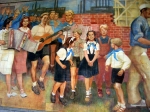
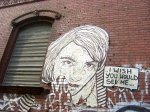
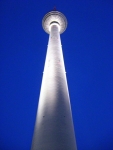

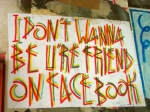
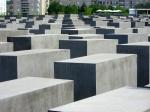
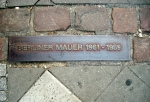







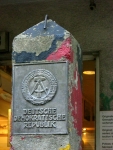
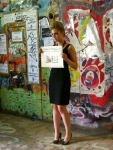

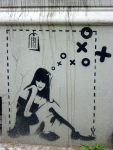


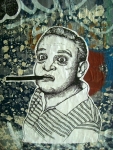

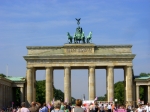

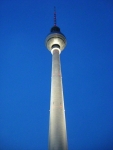


After all of its former grief Berlin could be easily forgiven for feeling sorry for itself but quite the opposite is true. The people are open and friendly. The city, which is built for double the amount of people that actually live there, is spacious, relatively clean and free from the madding crowds (that is unless you’re queueing to get into the Reichstag) you find in other large cities. It is developing its own personality, culture and sub-culture. Berlin officials spend a great deal of their annual budget on cleaning the city streets of graffiti but have still failed to keep ever-innovative and flourishing street artists from making their mark. One of the highlights of my time in Berlin was taking a tour of the local street art which offered a certain sense of just how free-thinking and expressive Berlin really is even though it doesn’t get anywhere near the same amount of press as New York, Paris or London.
There’re two last things I want to mention and, at the risk of making this sound like a bad episode of Sesame Street, they both begin with the letter A: architecture and Ampleman. Berlin boasts a pretty heady mish-mash of embellished domes and pillars in the Bebel Platz, staunch constructions of the Cold War period in the vicinity of Karl-Marx-Allee and aliens-have-landed-esque post-modernism with the TV Tower in Alexander Platz. I was truly struck by the range of architecture I found there and how pertinently it reflected the city’s history. Ampleman was a slightly less profound and a slightly more humorous cultural discovery. It is the name given to the green man who graces the crossing signs in Berlin. He differs from other green men across the world because he wears a hat and because he looks either like he’s doing the robot or that he has a large erection. My friends and I thought it was nothing more than yet another cake-fuelled, giddy aside on our part but actually Ampleman is something of an institution and has his own shop. I could have spent a lot of money there but managed to restrain myself to a set of rub-on Ampleman tattoos for my boyfriend. I’m sure you’ll agree it’s an essential accessory for any right-minded individual.
]]>
